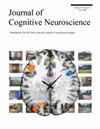基于规则和范例的类别学习迁移
IF 3.1
3区 医学
Q2 NEUROSCIENCES
引用次数: 1
摘要
我们比较了通过规则应用和范例处理参与新刺激转移的神经系统。参与者学习了一个涉及抽象复杂规则的分类任务,然后在没有反馈的情况下对不同类型的转移刺激进行分类。规则刺激使用了新特性,因此只能使用规则进行分类。范例刺激只包括应用规则所需的一个特征,因此要求参与者根据与先前学习过的类别成员的相似性进行分类。形成一致和不一致的刺激,使得规则和特征相似性都表明同一类别(一致)或相反类别(不一致)。我们发现所有引发基于规则的转移的条件都招募了与图式记忆相关的内侧前额叶-前海马体网络。相反,基于范例的转移招募了与学习和执行刺激类别映射相关的顶叶内沟区域以及后海马体。这些结果支持了基于图式和范例机制的互补学习和泛化策略的分类理论。本文章由计算机程序翻译,如有差异,请以英文原文为准。
Rule and Exemplar-based Transfer in Category Learning
We compared the neural systems involved in transfer to novel stimuli via rule application versus exemplar processing. Participants learned a categorization task involving abstraction of a complex rule and then categorized different types of transfer stimuli without feedback. Rule stimuli used new features and therefore could only be categorized using the rule. Exemplar stimuli included only one of the features necessary to apply the rule and therefore required participants to categorize based on similarity to individual previously learned category members. Consistent and inconsistent stimuli were formed so that both the rule and feature similarity indicated the same category (consistent) or opposite categories (inconsistent). We found that all conditions eliciting rule-based transfer recruited a medial prefrontal–anterior hippocampal network associated with schematic memory. In contrast, exemplar-based transfer recruited areas of the intraparietal sulcus associated with learning and executing stimulus-category mappings along with the posterior hippocampus. These results support theories of categorization that postulate complementary learning and generalization strategies based on schematic and exemplar mechanisms.
求助全文
通过发布文献求助,成功后即可免费获取论文全文。
去求助
来源期刊
CiteScore
5.30
自引率
3.10%
发文量
151
审稿时长
3-8 weeks
期刊介绍:
Journal of Cognitive Neuroscience investigates brain–behavior interaction and promotes lively interchange among the mind sciences.

 求助内容:
求助内容: 应助结果提醒方式:
应助结果提醒方式:


